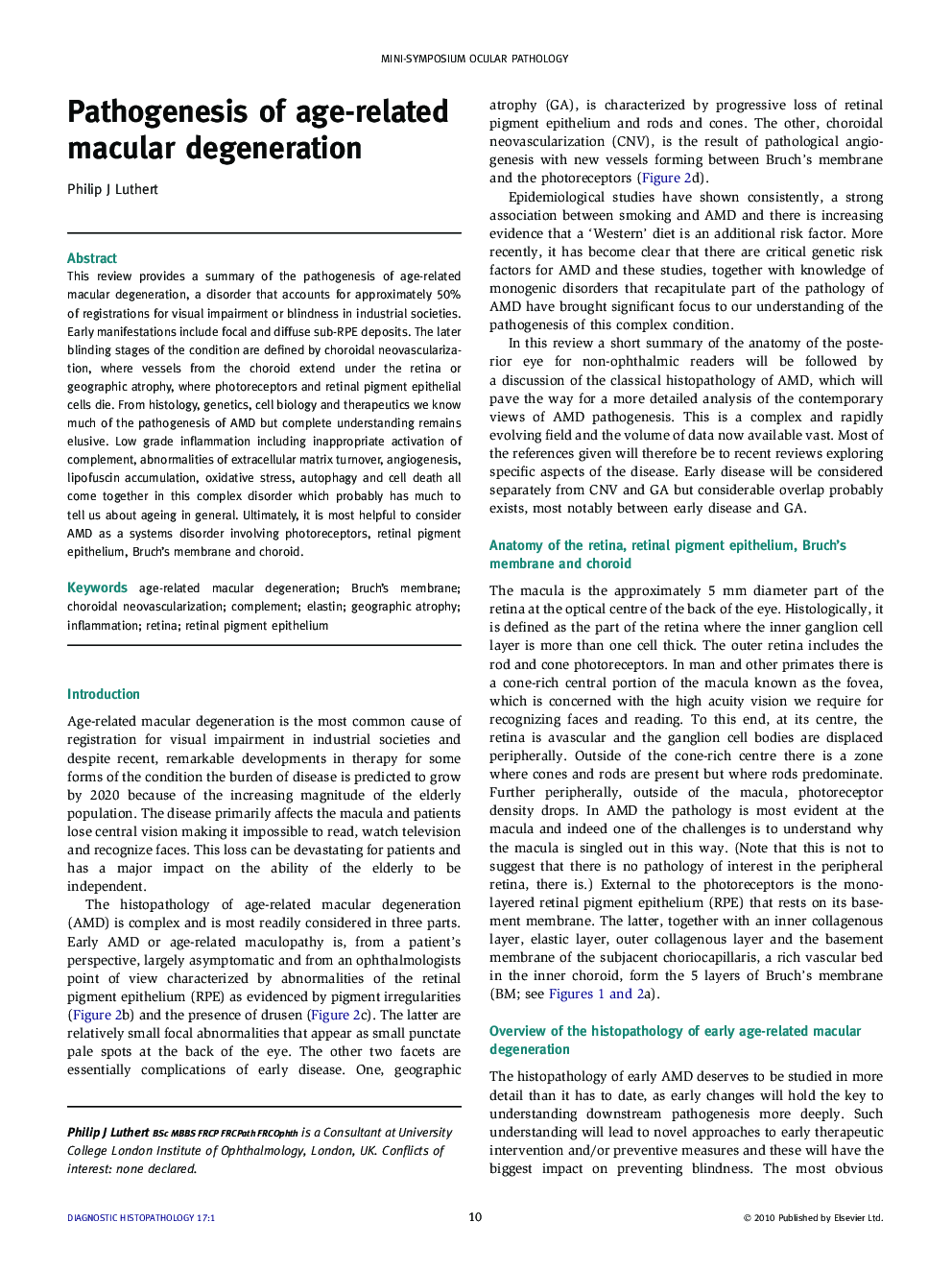| Article ID | Journal | Published Year | Pages | File Type |
|---|---|---|---|---|
| 4131578 | Diagnostic Histopathology | 2011 | 7 Pages |
This review provides a summary of the pathogenesis of age-related macular degeneration, a disorder that accounts for approximately 50% of registrations for visual impairment or blindness in industrial societies. Early manifestations include focal and diffuse sub-RPE deposits. The later blinding stages of the condition are defined by choroidal neovascularization, where vessels from the choroid extend under the retina or geographic atrophy, where photoreceptors and retinal pigment epithelial cells die. From histology, genetics, cell biology and therapeutics we know much of the pathogenesis of AMD but complete understanding remains elusive. Low grade inflammation including inappropriate activation of complement, abnormalities of extracellular matrix turnover, angiogenesis, lipofuscin accumulation, oxidative stress, autophagy and cell death all come together in this complex disorder which probably has much to tell us about ageing in general. Ultimately, it is most helpful to consider AMD as a systems disorder involving photoreceptors, retinal pigment epithelium, Bruch’s membrane and choroid.
